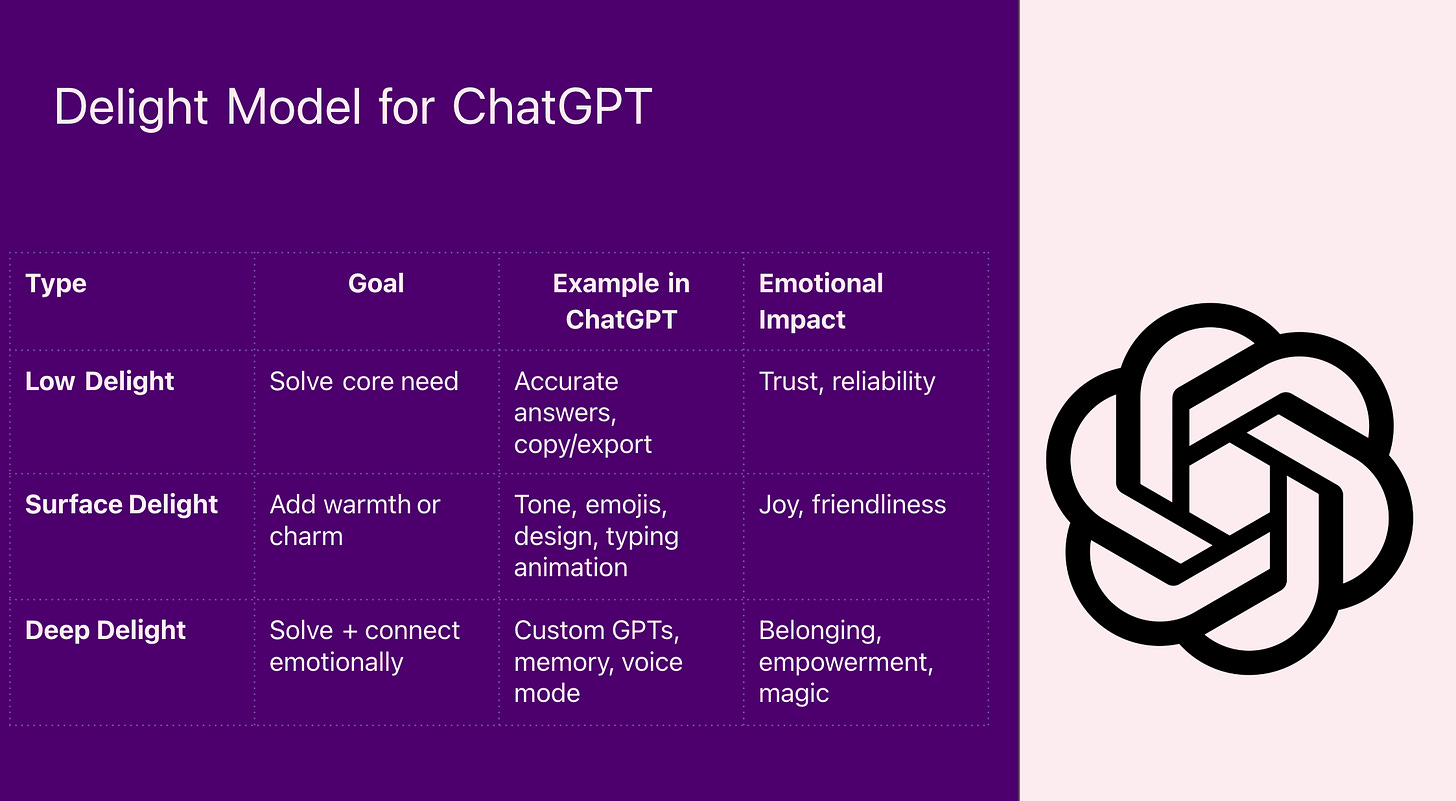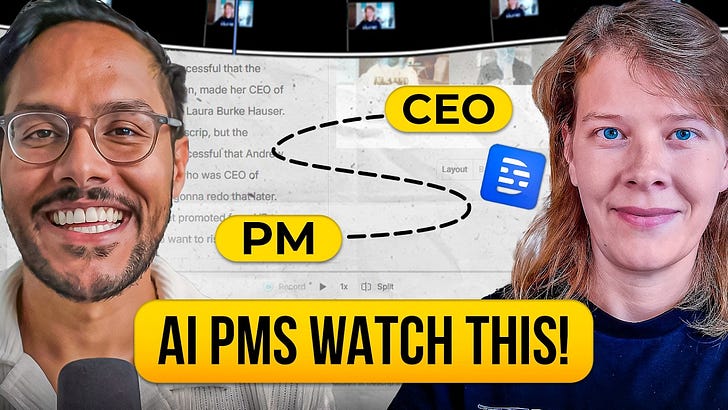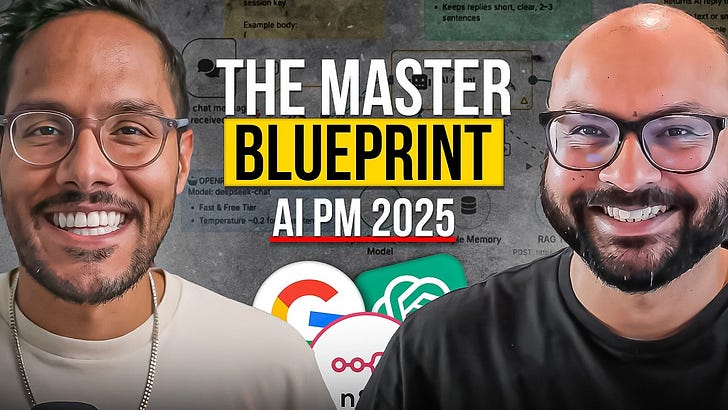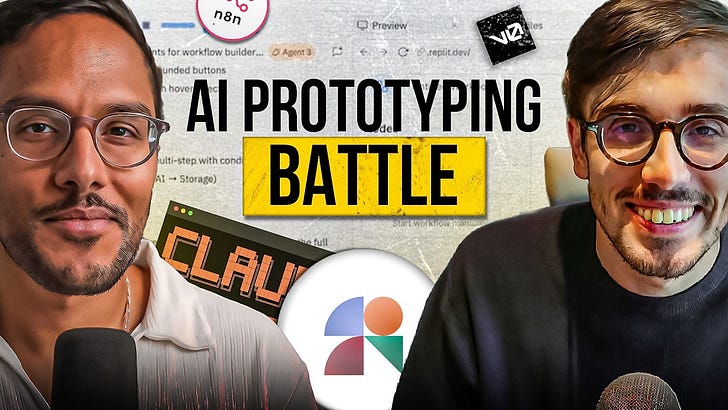Check out the conversation on Apple, Spotify and YouTube.
Brought to you by:
Miro: The AI innovation workspace
Testkube: Leading test orchestration platform
Kameleoon: Leading AI experimentation platform
Today’s Episode
Why do some AI products feel like magic while others feel like work?
You shipped. It works. Your metrics show “success.”
But users aren’t coming back. They’re not telling friends. And next quarter, they’ll switch to the competitor with a better model.
Nesrine Changuel built Spotify Wrapped and ran Google’s Delight Team. Today, she’s giving you the complete playbook:
The 4-step Delight Model to engineer emotional connection (not just satisfaction)
Your Newsletter Subscriber Bonus
For subscribers, each episode I also write up a newsletter version of the podcast. Thank you for having me in your inbox.
Today’s guide covers:
The Delight Model
The 4-Steps to Delight
How to Apply Delight to AI Products
1. The Delight Model
When you build products, you need to meet two dimensions: functional needs AND emotional needs.
Most AI builders only focus on function. That’s the trap.
Here’s the framework:
1a. The Three Types of Delight
Low Delight: Pure functionality. No emotion.
Examples: Video podcasts on Spotify. Lossless audio streaming. These work, but they don’t create emotional connection.
Surface Delight: Pure emotion. No function.
Examples: Confetti animations. Progress bars that turn into Diwali lights on Spotify. Easter eggs in products.
These create moments of joy, but don’t solve problems.
Deep Delight: Functionality + Emotion combined.
Examples: Gmail Smart Compose. Google Meet’s real-time translation with YOUR voice. Claude Code’s “bamboozling” status messages.
These solve real problems WHILE creating emotional connection. This is where you win.
1b. Why Surface Delight Alone Fails
Nesrine shared two brutal examples of delight gone wrong:
Apple’s AI Message Summary: A girlfriend sent a long breakup message. The AI summary? “No longer in a relationship. Wants belongings from apartment.”
Cold. Brutal. On his birthday.
WhatsApp Photo Recovery: After losing her brother, Nesrine’s friend found a photo of him. When she clicked, WhatsApp said: “This picture is no longer available. Ask John to resend it.“
In a grief moment, that last line was devastating.
The lesson? Delight without inclusiveness creates disappointment.
1c. The 50-40-10 Rule for Your Roadmap
How much of each type should you build?
50% Low Delight - Your product must function
40% Deep Delight - This is your differentiation
10% Surface Delight - Brand personality and surprise
Deep delight gets the biggest allocation after core functionality because it drives:
2x higher retention
2x more referrals
2x more revenue
2. The 3-Step Delight Model
Here’s the complete process Nesrine uses at Google and Spotify to systematically engineer delight.
Step 1 - Identify User Motivators (Functional + Emotional)
Most PMs segment by demographics or behavior. That’s not enough.
You need motivational segmentation.
For Spotify users:
Functional Motivators:
Search for specific album
Get inspired by new music
Improve productivity
Emotional Motivators:
Personal: Feel less lonely, change mood, feel productive
Social: Feel part of the vibe, belong to community, feel proud
The key? Your users aren’t all using your product for the same reason. You need to map BOTH dimensions.
Step 2 - Turn Motivators Into Product Opportunities
Once you have motivators, map them to the Delight Grid.
The grid has:
Vertical axis: Functional motivators
Horizontal axis: Emotional motivators
Place every feature idea on this grid:
Ideas in only the functional column? → Low Delight
Ideas in only the emotional row? → Surface Delight
Ideas at the intersection? → Deep Delight
The power of this tool? If you can’t map a feature to ANY motivator, you probably shouldn’t build it.
Step 3 - Validate Solutions with the Delight Checklist
Before shipping, run your feature through the Delight Checklist:
Does it bring value to the business?
Does it bring value to the user?
Have you collected enough user insights?
Is it familiar enough? (Even innovation needs some familiarity - this is why
Discover Weekly works)
Is it inclusive? (Corner cases = critical)
Is it continuous? (One-time delight fades)
Is it measurable?
Real example: Google Meet filters weren’t shipped until they worked on ALL skin tones. Even if 0.01% of users would have a bad experience, they held the launch.
3. How to Apply Delight to AI Products: ChatGPT, Cursor & More
AI is making massive progress on functionality. But if you ONLY focus on function, you fall into the trap.
Here’s how to engineer deep delight into AI products:
3a. The Humanization Technique
Ask yourself: If my product was a human being, how would the experience be better?
Example from Google Meet:
The team never compared Google Meet to Zoom or Teams. They compared it to: How would this meeting be better if we were all in the same room?
That mindset created:
Hand raise feature
Emoji reactions
Real-time translation with YOUR voice and emotion
Example from Dyson:
Dyson doesn’t compare their robot vacuum to competitors. They compare it to: How would a human cleaner do this better?
Result? Their robot asks you which room to start with, just like you’d instruct a person.
3b. Why ChatGPT Wins on Delight
Let’s map ChatGPT to the Delight Grid:
Low Delight (Function):
Accuracy of answers
Speed of responses
Quality of output
Surface Delight (Emotion):
Warm, conversational tone
Emojis in responses
Voice personality
Deep Delight (Function + Emotion):
Personalization that improves over time
Remembering your preferences and context
Making you feel less lonely (companionship need)
Making you feel like you have a coworker
The secret? Many people pay for ChatGPT not for the functional part, but because they feel less lonely. That emotional need (especially for solo founders or remote workers) drives the subscription.
3c. How Cursor and Claude Code Engineer Delight
Both products nail deep delight by combining:
Function: Autocomplete that actually works. Code generation that saves time.
Emotion:
Cursor’s seamless tab completion feels like magic
Claude Code’s status messages (”meandering,” “bamboozling,” “pontificating”) create personality
The sense of achievement when code works
Lovable does this too: Users feel a profound sense of achievement after just a few hours. Not just satisfaction with the output. Actual pride in what they built.
Where to Find Nesrine Changuel
Email productgrowthppp at gmail dot com if you’d like to advertise.
Related Content
Podcasts:
Newsletters:
P.S. More than 85% of you aren’t subscribed yet. If you can subscribe on YouTube, follow on Apple & Spotify, my commitment to you is that we’ll continue making this content better.
















